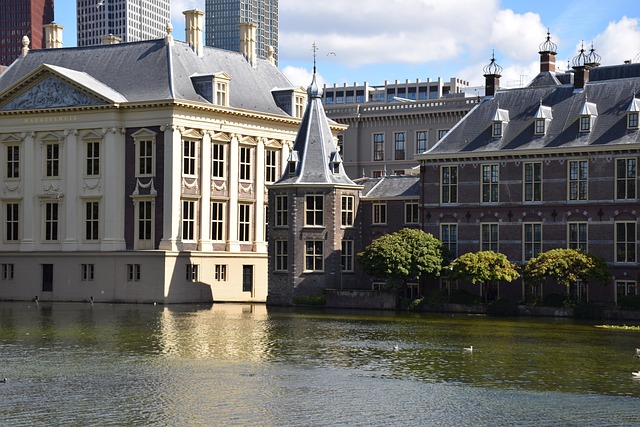
How Environmental Efforts That Subsidise Conservation Benefit Us All
In recent years, the discourse surrounding environmental sustainability and its importance has surged to the forefront of public consciousness. As climate change accelerates, and biodiversity declines, conservation efforts have become more critical than ever. However, what many may overlook is the reality that these efforts are not just beneficial for the environment; they also provide substantial advantages for human societies. Through financial incentives and subsidies, conservation initiatives can create a scenario where both the planet and humanity thrive. This article delves into the multifaceted benefits of environmental efforts that subsidize conservation—showing how these practices enhance individual well-being, promote economic growth, and contribute to community resilience.
The Interconnectedness of Human and Environmental Health
At the heart of conservation efforts lies the recognition that human health and environmental health are intricately intertwined. Ecosystems play a pivotal role in regulating air and water quality, controlling climate, and providing essential resources such as food and medicine. When we invest in conservation through subsidies, we ultimately safeguard these ecosystem services, leading to palpable benefits across human life.
Air and Water Quality
Healthy ecosystems—like forests and wetlands—act as natural filters and buffers, improving the quality of the air we breathe and the water we drink. For instance, wetlands can help filter pollutants and provide flood protection, while forests can sequester carbon, thus mitigating the impact of climate change. By funding conservation projects that preserve these ecosystems, we not only protect biodiversity but also ensure cleaner air and water for our communities.
Food Security and Nutritional Health
The agricultural systems that sustain human populations rely heavily on biodiversity. Diverse ecosystems are less prone to pests and diseases, which can lead to increased agricultural productivity. Programs that promote sustainable farming practices and biodiversity conservation can lead to improved crop yields and nutrition, securing food supplies for future generations. This is especially vital as the global population continues to grow and the strains on food systems intensify.
Economic Growth Through Green Jobs
One of the strongest arguments for supporting environmental conservation through subsidies is the economic opportunities that arise from green initiatives. Investments in conservation programs often lead to job creation in various segments of the economy.
Employment Opportunities
Workers in clean energy, sustainable agriculture, and conservation management are critical to the transition toward a more sustainable economy. For example, creating and maintaining parks and natural reserves requires a workforce skilled in environmental science, land management, and visitor services. Additionally, conservation-related industries, such as ecotourism and organic farming, are becoming increasingly popular, providing meaningful employment while promoting environmental stewardship.
Boosting Local Economies
Conservation initiatives can also help stimulate local economies. Areas rich in biodiversity often attract tourists, driving income to local businesses and enhancing infrastructure. A well-preserved national park can generate millions in tourism revenue, providing funding for community services and retail that benefits everyone involved. With subsidized conservation, we have the opportunity not only to protect natural areas but also to invest in local economies.
Community Resilience and Social Equity
When communities engage in conservation efforts, they foster a sense of collective responsibility and awareness around environmental issues. This engagement can lead to strengthened social networks and improved resilience.
Building Stronger Communities
Environmental initiatives often unite individuals around common goals. Community gardens, local cleanup events, and conservation projects bring people together, helping to forge connections among diverse groups. These social networks are essential in times of environmental crises, as they can mobilize responses more effectively.
Addressing Disparities
Subsidizing conservation efforts can also serve as a tool to address social inequities. Low-income communities often bear the brunt of environmental degradation, facing higher exposure to pollutants and less access to green spaces. Conservation subsidies can be directed towards improving conditions in these areas, ensuring that all populations have access to clean air, water, and recreational opportunities. By leveling the playing field, we foster a healthier, more equitable society.
The Role of Education and Awareness
Moreover, environmental efforts that subsidize conservation help enhance public understanding of ecological issues. Education on the importance of biodiversity and conservation fosters stewardship among individuals of all ages.
Informed Citizenry
Subsidized programs often come with components that aim to educate the public. Schools may incorporate environmental education into their curricula, community workshops can illustrate sustainable practices, and local organizations often host informational sessions. When individuals comprehend the critical connection between their actions and environmental outcomes, they are more likely to participate actively in conservation efforts.
Empowering Future Generations
Investing in education about conservation is an investment in the future. The youth are our next generation of leaders, and by instilling in them the values of environmental stewardship and sustainability, we ensure a legacy of responsibility towards the planet. Programs supported by subsidies can cultivate young environmentalists, innovators, and activists committed to addressing future challenges.
Challenges and Considerations
While the benefits of subsidizing conservation are clear, there are also challenges that need addressing. Funding allocation, policy framework, and effectiveness of programs can often become contentious issues. It’s essential that subsidies are directed toward initiatives that provide tangible, measurable outcomes for both the environment and communities.
Transparency and Accountability
To ensure that funded projects are effective, transparency in how subsidies are spent and the accountability of institutions involved are paramount. By establishing clear metrics for success and ongoing community engagement, stakeholders can maintain trust and alignment with conservation goals.
Balancing Economic and Environmental Interests
Another challenge lies in balancing economic interests with conservation goals. Policymakers must navigate the complexities of economic development versus environmental preservation, ensuring neither is sacrificed unnecessarily. Engaging multiple stakeholders including businesses, non-profits, and local communities helps to create comprehensive strategies that favor sustainable development.
The Path Forward
As we face mounting environmental challenges, it is evident that efforts to subsidize conservation must remain a priority. The interconnectedness of human and environmental health showcases why these initiatives must be supported broadly, as they yield dividends not only for nature but also for society as a whole.
Shifting perspectives from viewing conservation as merely an environmental concern to acknowledging its widespread economic and social benefits can help cultivate broader support for these initiatives. Increased public awareness and engagement, coupled with sound policies, can pave the way for a resilient, sustainable future for generations to come.
In conclusion, environmental efforts that subsidize conservation are not only beneficial to the ecosystems they protect; they are an essential investment in our health, economy, and communities. By recognizing and embracing these multifaceted benefits, we can advocate for a sustainable path that harmonizes human needs with the natural world.



